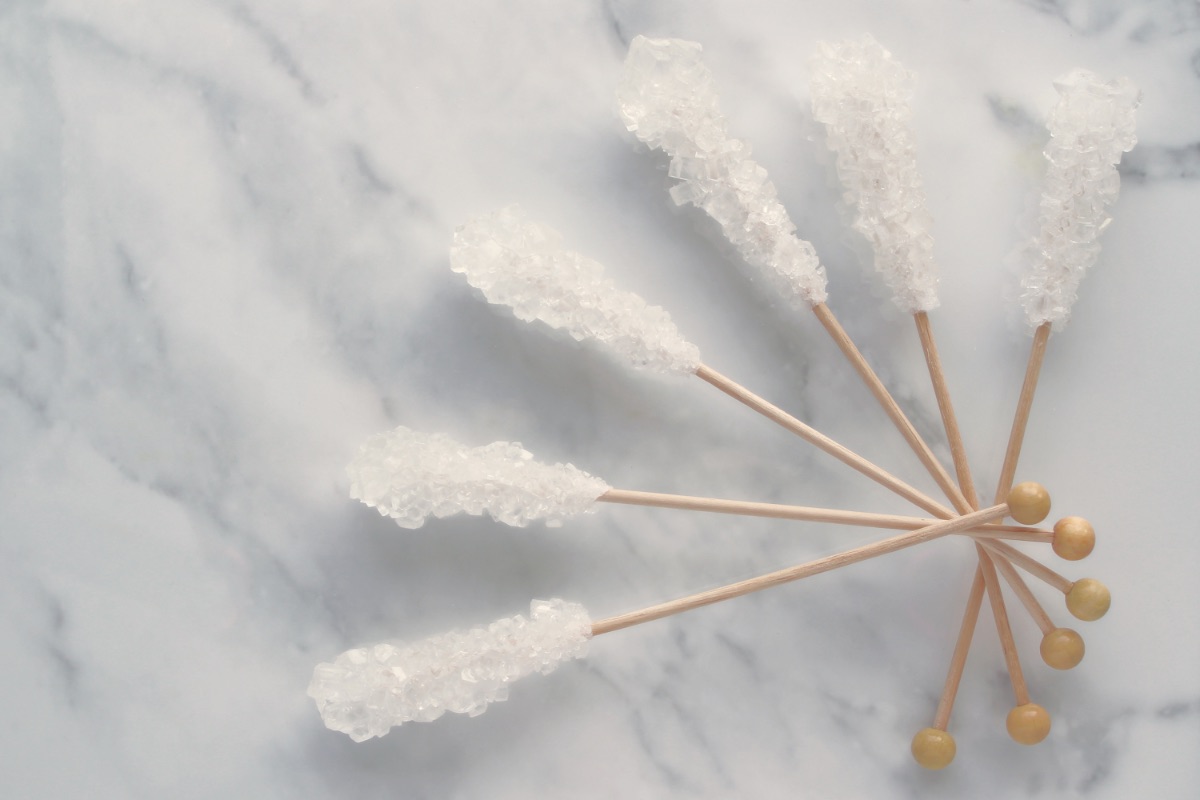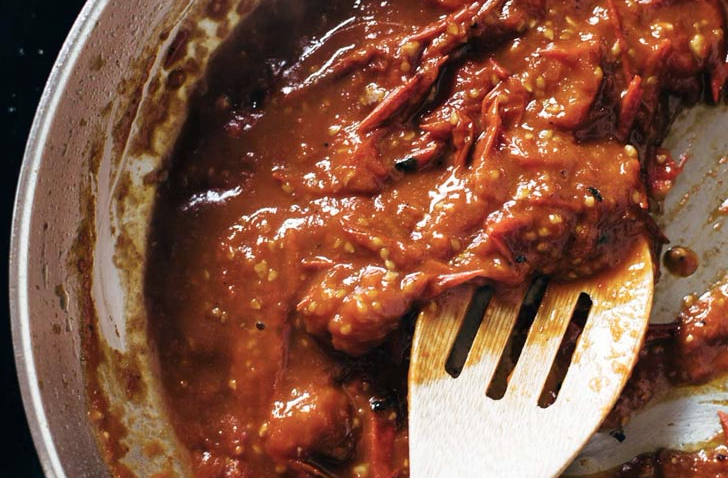Want to ripen avocados quickly? Here's what works—and what doesn't.
We love avocados' creamy texture and taste, their versatility in recipes (especially recipes that are as easy as putting avocados on toast or making guacamole), and all of the stellar health benefits of avocado. But finding a ripe avocado at the store is not a sure bet every time. Avocados don't start to ripen until they're off the tree, so sometimes we have to wait for them to ripen before we use them. We tested various methods and hacks to ripen avocados, and found what works best—and what doesn't.
How can you tell if an avocado is ripe?
Gently squeeze the avocado with the palm of your hand, not your fingertips. This prevents bruising and brown spots. It should be soft, but not squishy. (If it's very soft, it is overripe.) If you found an avocado that seems OK, pop off the stem cap at the top of the avocado with your fingernail. If it pops off easily and is green underneath, it's good to go. If the stem cap is tough to remove, the avocado likely needs another day or two to ripen. And if it's brown underneath, the avocado might be overripe—but go ahead and cut into it to see how the flesh looks.
Once your avocado is ripe, learn how to cut an avocado; then try these quick avocado recipes to use it. Or if you are not ready to use the avocado, transfer it to the refrigerator to slow the ripening process. See The Best Way to Store Fruits and Veggies for more tips.
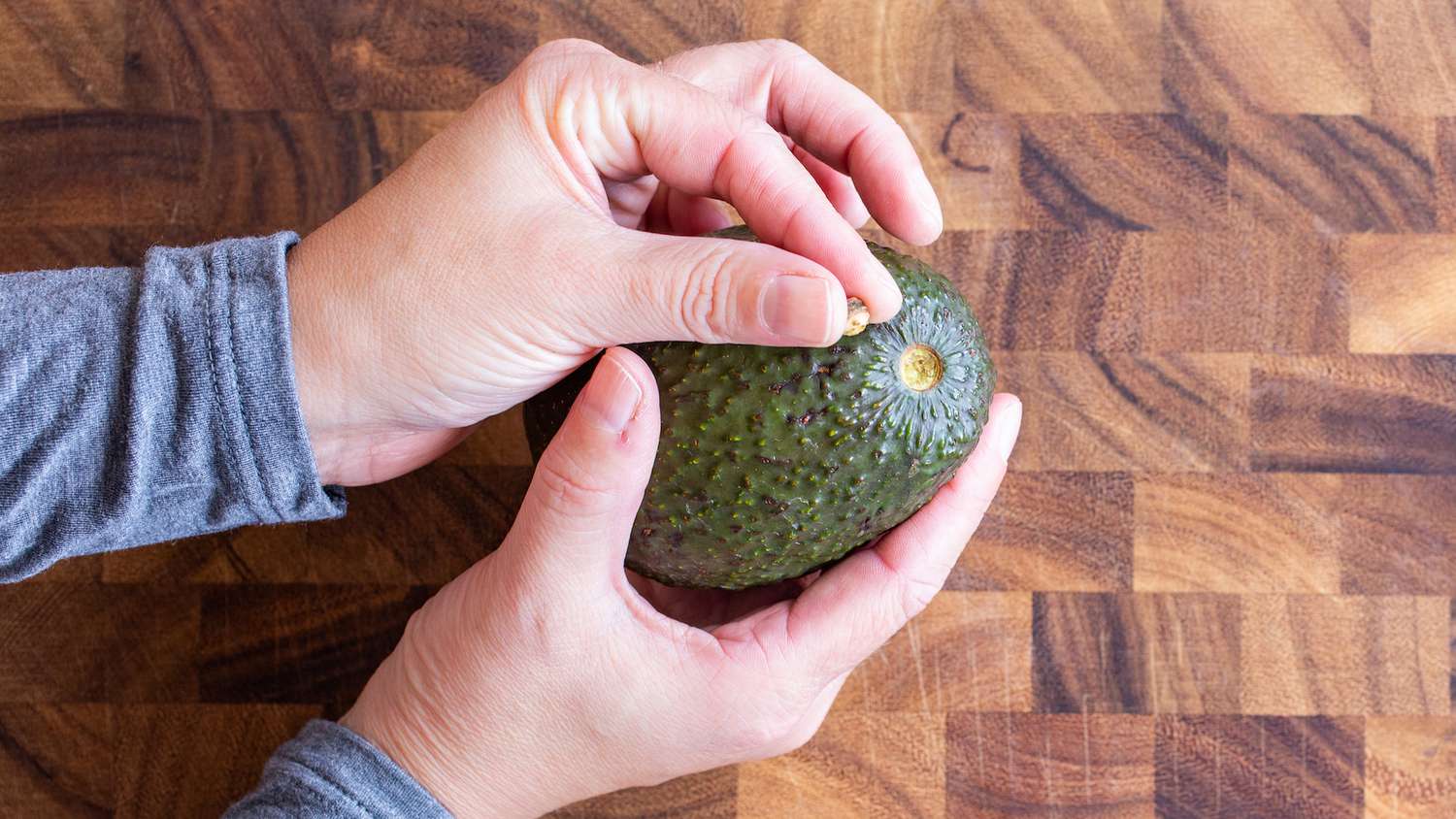
Casey Barber
How long do avocados take to ripen?
If you've got an underripe avocado, it can ripen up anywhere between overnight or 4 to 5 days after you bring it home. How long it takes depends on how firm it is when you buy it. The harder it feels, the longer it will take. If you can only get avocados that are firm and not yet ripe, you can speed up the process.
How to Ripen Avocados
The best way to ripen an avocado is good old-fashioned time and patience. Letting an avocado sit in a warm, room-temperature spot out of direct sunlight is the most natural way for it to ripen. But sometimes you need a ripe avocado sooner than it would naturally be ready.
The best way to ripen avocados quickly:
You can speed up the avocado-ripening process with a piece of fruit. Add an avocado, along with an apple, a banana or a kiwi to a brown paper bag and fold to seal. These fruits release ethylene gas, a plant hormone that aids ripening. The closed paper bag traps the gas inside so the process can work faster. If you don't have any extra apples, bananas or kiwi in the kitchen, you can also place an avocado in a paper bag by itself. This will trap the ethylene gas that the avocado's producing, but it won't ripen quite as fast.
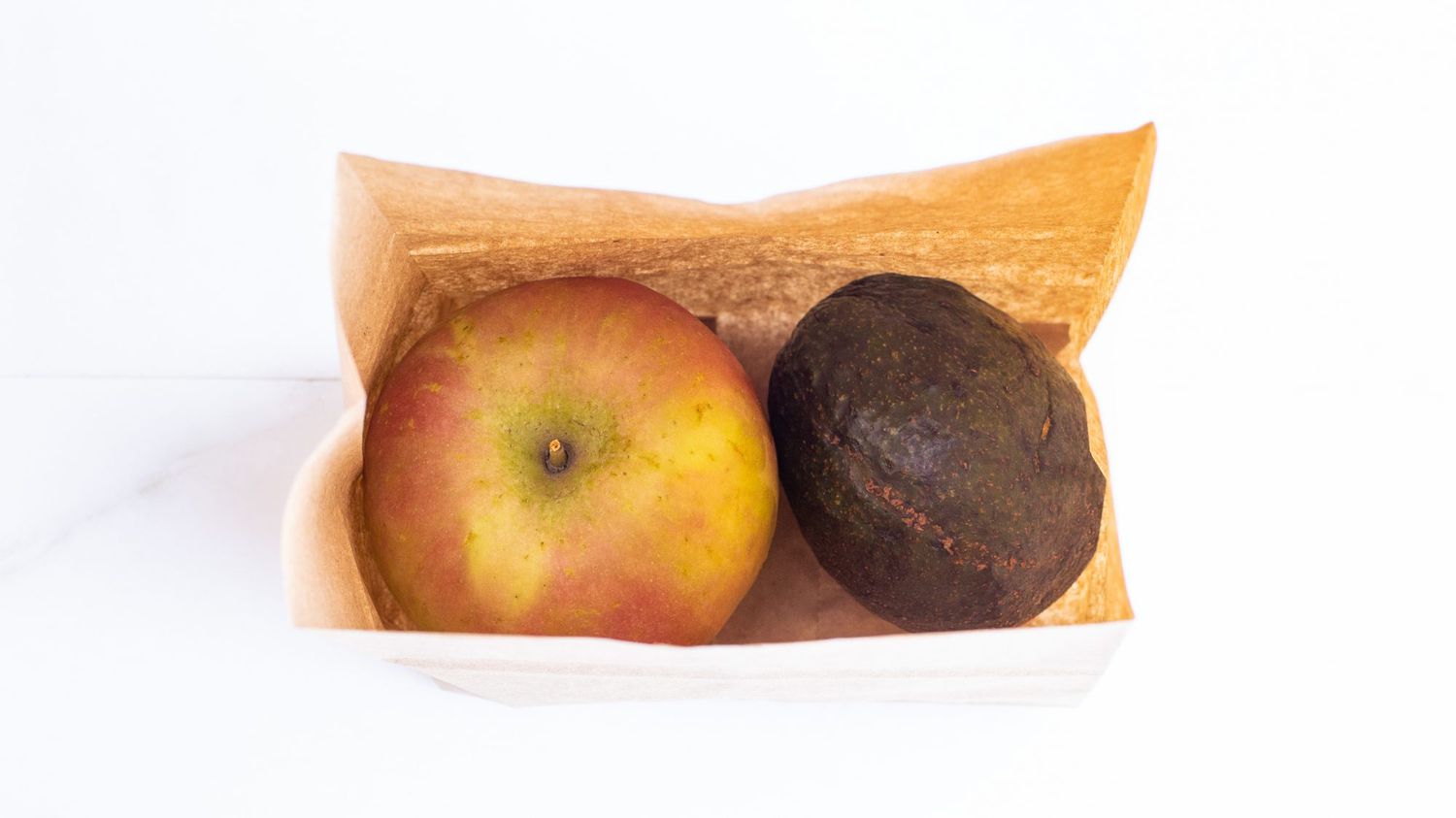
Casey Barber
Avocado-ripening hacks to SKIP:
Two other hacks to make avocados ripen faster didn't have as much of an effect as using fruit in a paper bag:
- Covering the avocado with flour in a paper bag
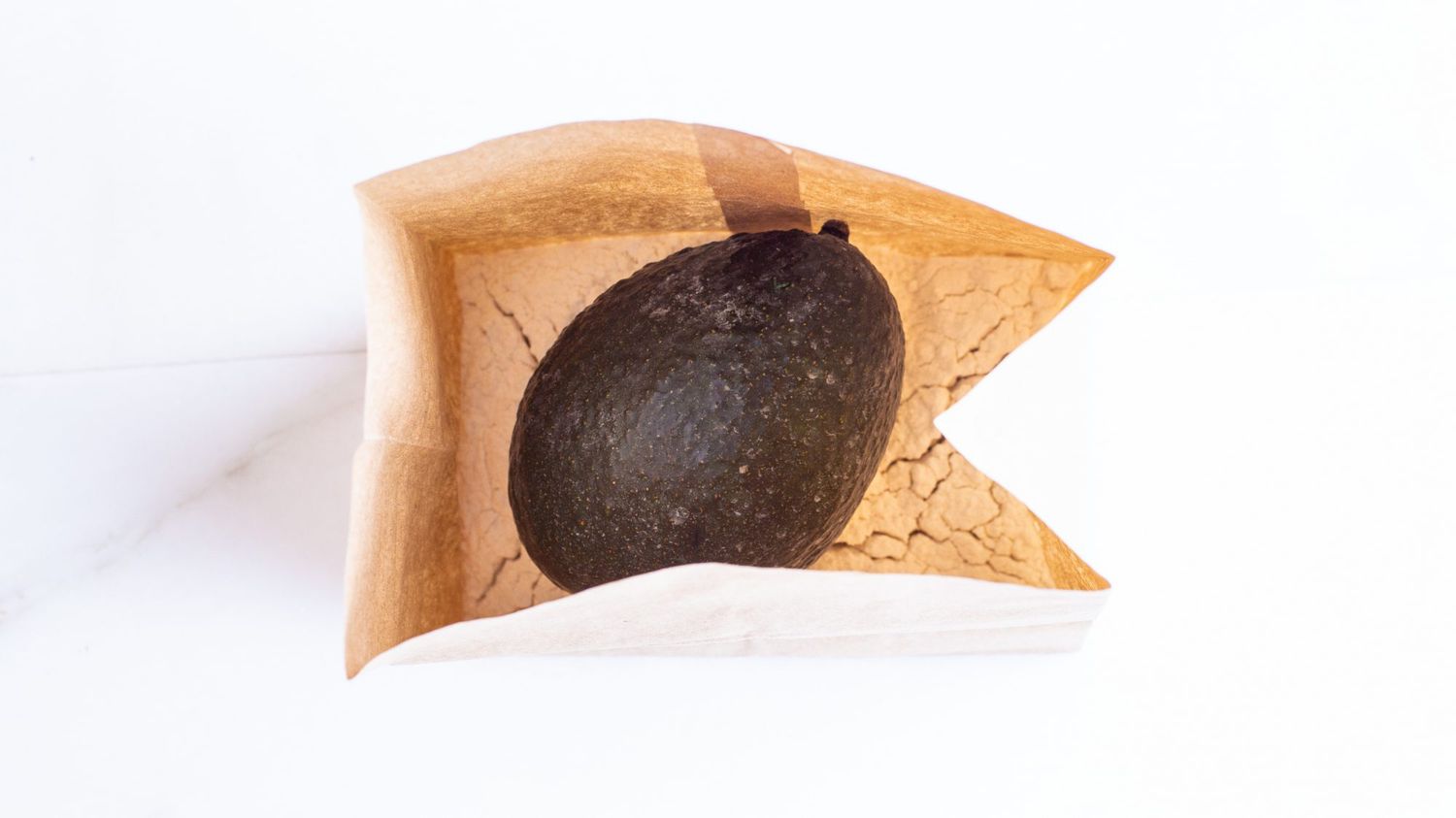
Casey Barber
- Covering the avocado with rice in a paper bag
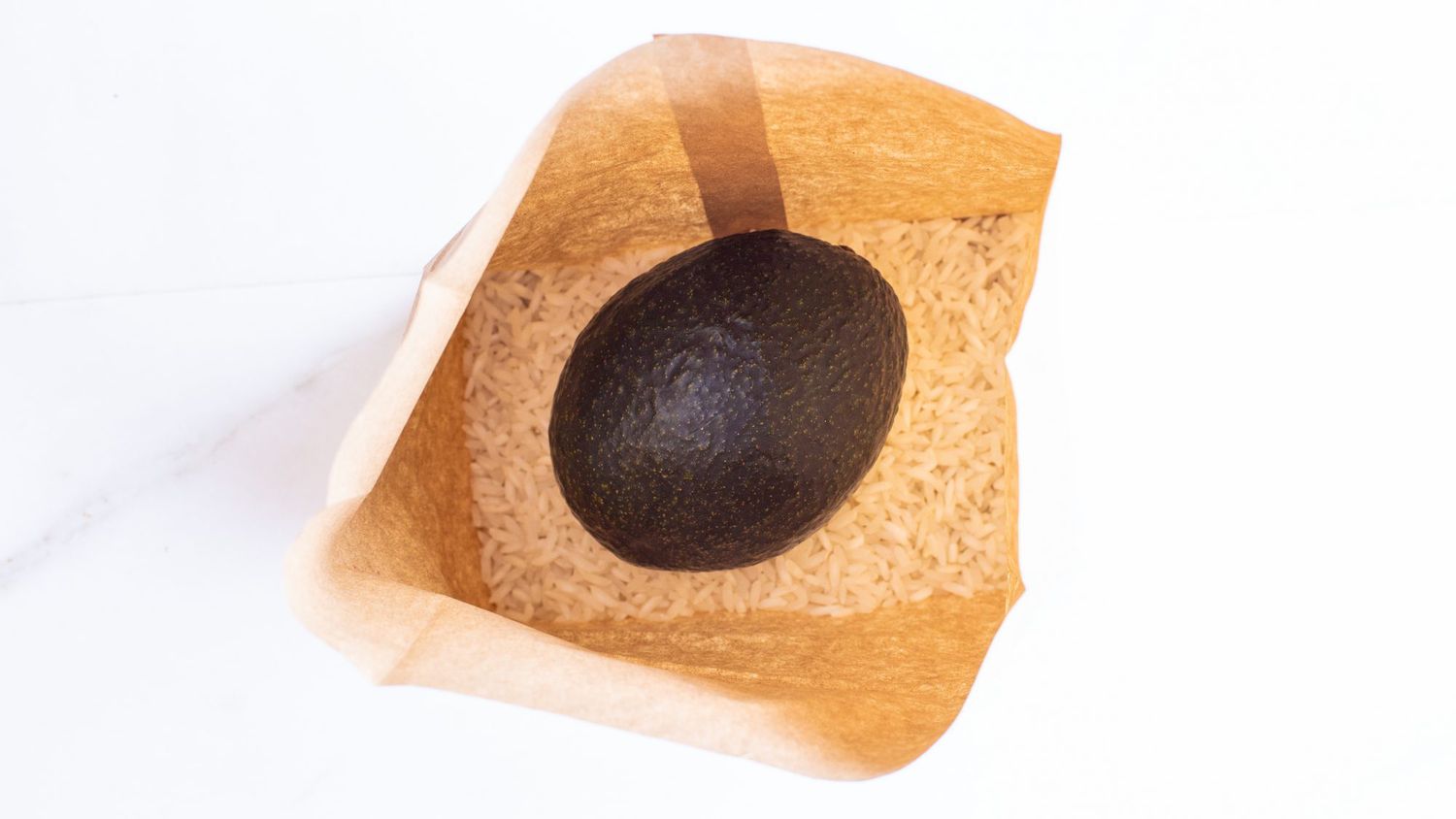
Casey Barber
Both methods claim to concentrate the ethylene gas and also wick away moisture that might turn the avocado moldy. Mold is usually not an issue with avocados that are ripening at room temperature, and neither avocado ripened any faster than one that sat out on the counter by itself. Find out more Kitchen Hacks You Think Are Great but Aren't.
Other methods to soften unripe avocados:
There are two other hacks that can soften (but not technically ripen) an avocado in minutes. Both of these methods will make the avocado usable to mash into guacamole, but the flavor of the avocado won't be as pronounced and the texture will not be quite as rich and creamy as it would be if it ripened naturally. It's up to you—how desperate are you for an avocado?
How to "ripen" an avocado in the oven
Preheat the oven to 200°F. Wrap an avocado in foil and bake, checking every 10 minutes, until the avocado is soft enough to use.

Casey Barber
How to "ripen" an avocado in the microwave
Cut an avocado in half and tightly wrap each half in plastic wrap. Microwave in 30-second bursts until soft enough to use. Submerge the wrapped avocado halves in a bowl of ice water to stop the cooking process.
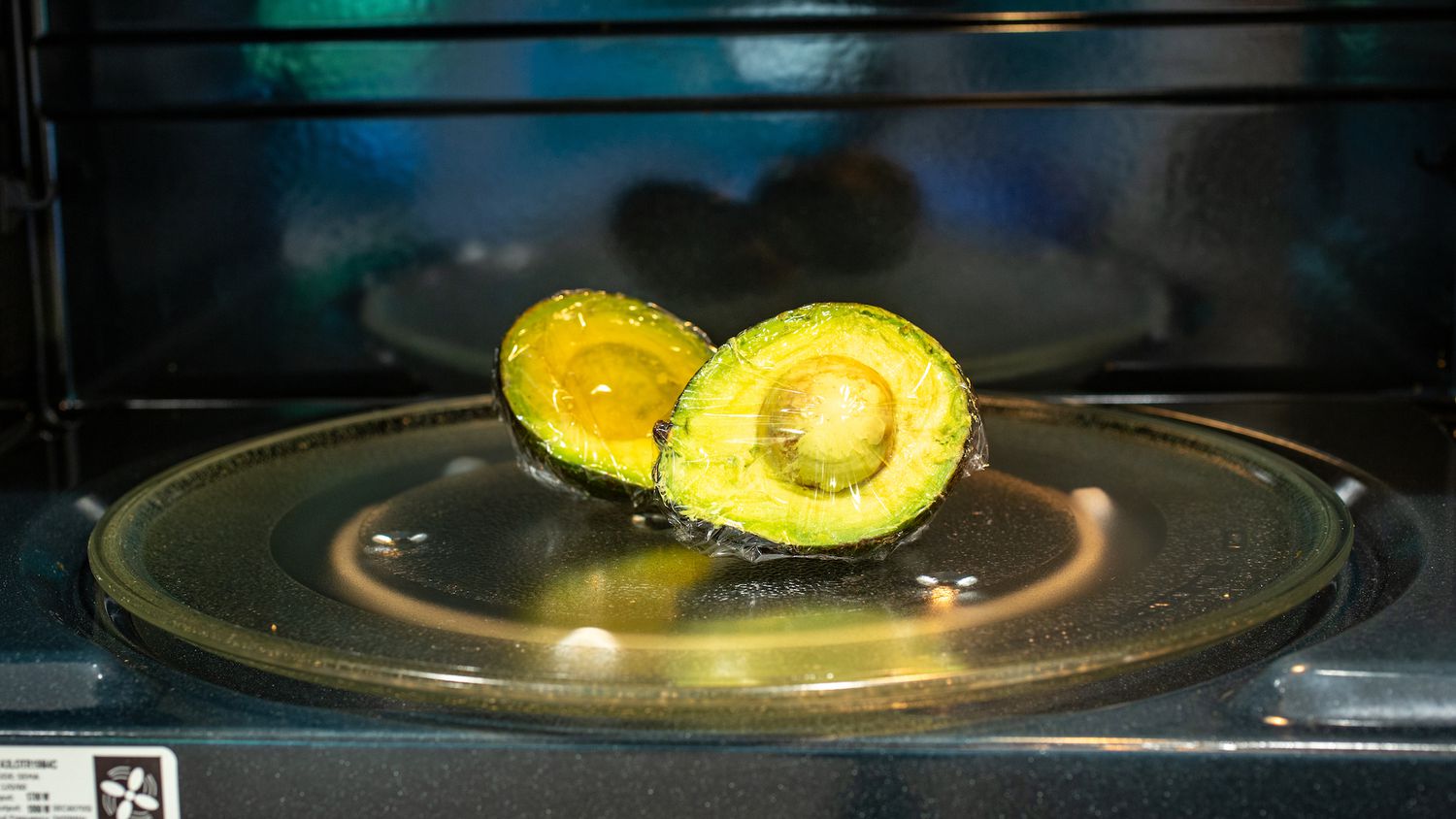
Casey Barber
This article was written by Casey Barber from EatingWell and was legally licensed through the NewsCred publisher network. Please direct all licensing questions to legal@newscred.com.




